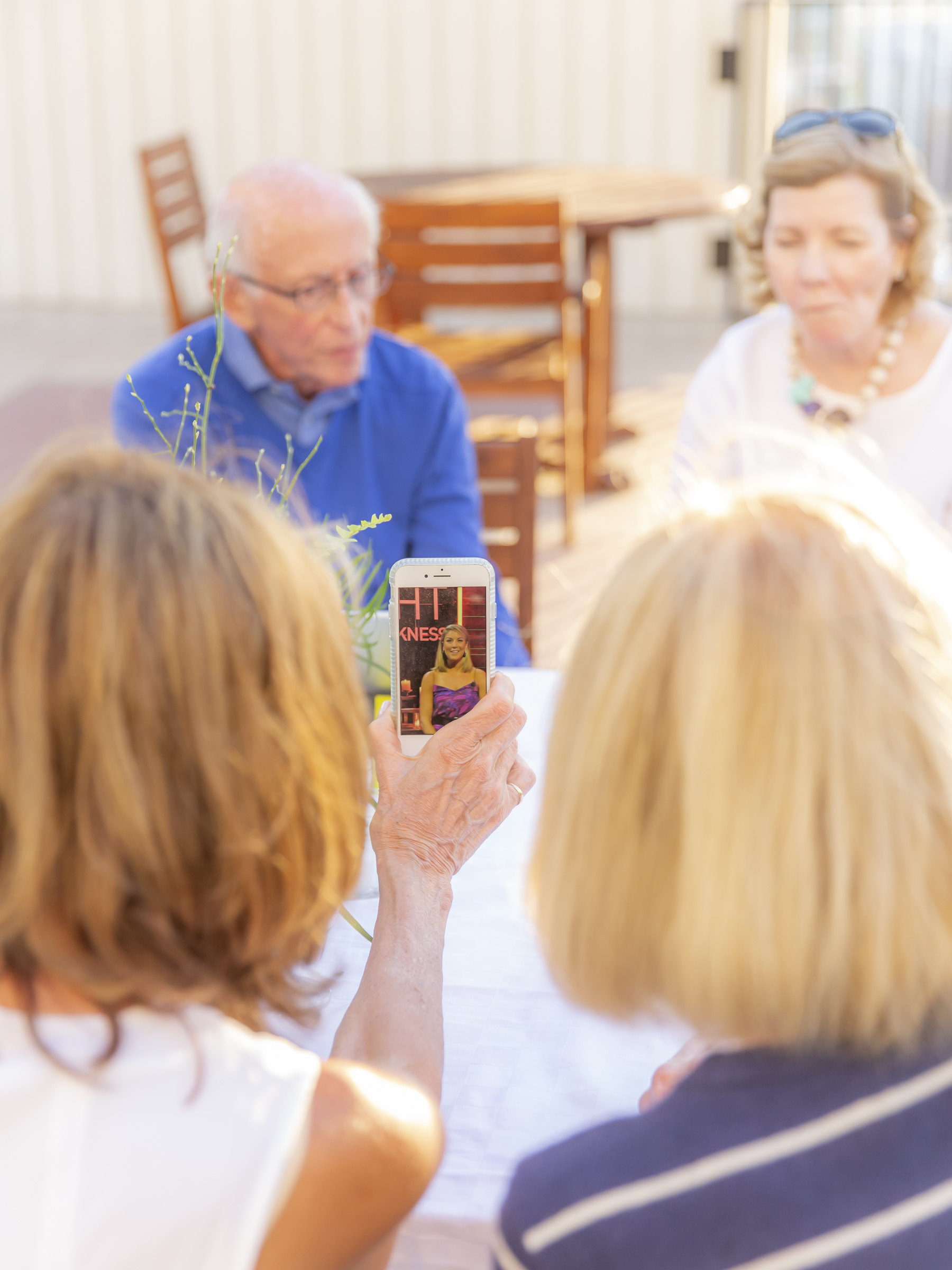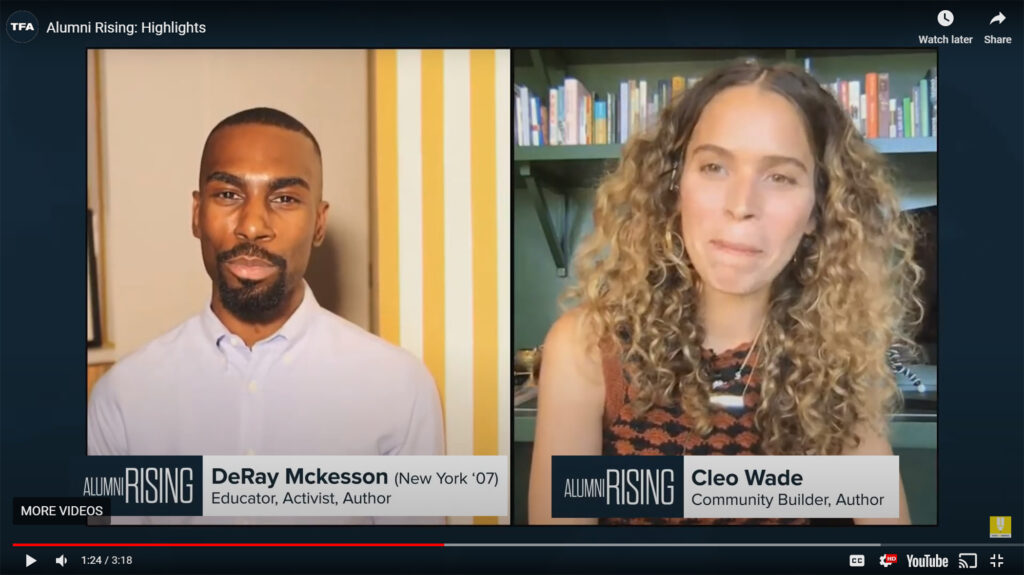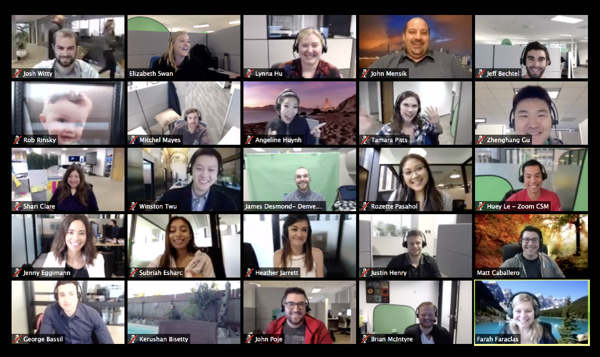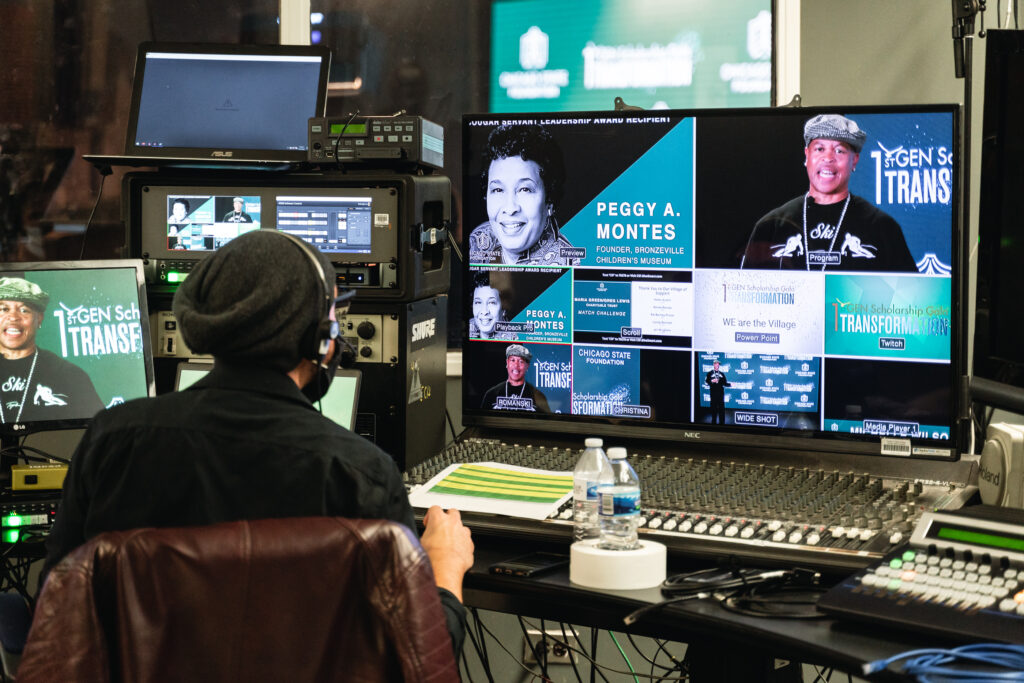What is UX?
User experience, (UX for short), is an all-encompassing term for how engaging with a product or service makes a person feel. Is it easy to learn? Convenient? Does it add value to your life? Is it accessible to people of various abilities? Does it feel satisfying to use? These musings can be boiled down to one essential question: Is using this product a chore? UX design seeks to improve our interactions so that the delivery method doesn’t interfere with the product.
Where did UX come from?
The idea of improving the things we use to best suit the way we use them has been around for centuries. Around 4000 B.C. the concept of Feng Shui highlighted the importance of arranging spaces in the most useful and human friendly way possible. Later, the Greeks pioneered the idea of ergonomics or human use based design. Hippocrates described how a surgeon’s workplace should be set up. He specifies the surgeon’s positioning, “the surgeon may stand or be seated, in a posture comfortable for him”—and the arrangement of tools; “they must be positioned in such a way as to not obstruct the surgeon, and also be within easy reach when required” and more.
What happens when we design with the actions of humans in mind?
In more recent history, the factory boom of the 19th and early 20th century caused entrepreneurs to study the human element in the factory assembly process. They noted that a simple change in policy or layout led to faster production and lower costs. Frank and Lillian Gilbreth studied what they termed “work motions.” The pair filmed everyone from assembly line workers to physicians going about their duties, then broke down the work into individual motions. By studying these motions, they highlighted inefficiencies, and came up with solutions to improve worker productivity. For example, they discovered that surgeons routinely spent more time looking for instruments than they did performing surgery. This study led to the now ubiquitous practice of a surgeon, without looking up, asking “Scalpel please.” and being handed the instrument in question.
How can studying the step-by-step actions a task requires improve the life of the person performing it?
In their work studies Frank and Lillian were not strictly seeking to improve interactions for workers, only to improve productivity. And yet the practice of breaking down the step by step actions of performing a task is the cornerstone of the later user experience design movement. By taking what they learned at work and applying it to the management of their 12 children the couple improved their family life, saving time, energy, and frustration. Two of their children would later document the experience of growing up in this household in their book Cheaper by the Dozen. The story details the many ways in which careful consideration and intentional design based on the scientific method improved the experience of living in such a large family.
Как избежать распространенных ошибок в Vavada казино: Руководство для россиян
В мире онлайн-гемблинга существует множество казино, которые привлекают игроков своими бонусами и выгодными предложениями. Однако, не все казино являются надежными и безопасными для российских игроков. В этой статье мы рассмотрим распространенные ошибки, которые можно избежать при выборе и игре в казино Vavada, одном из самых популярных онлайн-казино в России.
Какие частые ошибки совершают игроки? Как выбрать надежное казино? Как избежать мошенничества и обмана? В этом руководстве мы ответим на все эти вопросы и предоставим вам полезные советы, которые помогут вам наслаждаться безопасной и выгодной игрой в казино Vavada. Если вы хотите узнать, как максимально использовать свои шансы на выигрыш и избежать распространенных ловушек, то продолжайте чтение этой статьи.
Основные ошибки, которые совершают российские игроки в Vavada казино
Вавада казино является одной из самых популярных платформ для онлайн-гемблинга в России. Однако, при игре в казино можно совершить некоторые распространенные ошибки, которые могут привести к потере денег и разочарованию. Чтобы избежать этих ошибок, важно следовать нескольким простым рекомендациям.
Во-первых, перед тем как начать играть в Вавада казино, важно ознакомиться с правилами и условиями платформы. Это позволит избежать недоразумений и конфликтов в будущем. Также, следует изучить основные стратегии игры, чтобы увеличить свои шансы на победу. в дополнение, необходимо установить лимиты на свои ставки и потери, чтобы не потерять контроль над своим банкроллом.
Во-вторых, при выборе игровых автоматов в Вавада казино, рекомендуется обращать внимание на их возврат к игроку (RTP). Чем выше процент RTP, тем выше вероятность выигрыша. Также, стоит избегать игры на автоматах с низкой волатильностью, так как они обычно приносят меньшие выигрыши. В дополнение, не стоит полагаться только на удачу, а лучше использовать стратегии и тактики игры, которые могут повысить шансы на успех.
В-третьих, следует быть осторожным при использовании бонусов и акций в Вавада казино. Некоторые игроки могут попасть в ловушку, принимая все доступные бонусы, не учитывая их условия отыгрыша. В дополнение, необходимо внимательно читать правила и условия бонусной программы, чтобы избежать неприятных сюрпризов. Также, стоит помнить, что бонусы могут иметь ограничения на максимальную сумму вывода выигрышей.
Как выбрать надежное и лицензированное онлайн-казино: советы для российских игроков
Вавада казино – одно из самых популярных онлайн-казино среди российских игроков. Однако, при игре в нем есть несколько распространенных ошибок, которые стоит избегать. В этом руководстве мы рассмотрим несколько важных советов, которые помогут вам насладиться игрой в Vavada казино без лишних проблем и потерь.
Первая ошибка, которую стоит избегать, это игра без знания правил и стратегий. Прежде чем начать играть в Vavada казино, обязательно изучите правила каждой игры, которую планируете сыграть. Играя без понимания основных правил, вы рискуете потерять свои деньги без какой-либо выгоды. Также стоит изучить различные стратегии игры, которые помогут вам повысить свои шансы на выигрыш.
Вторая распространенная ошибка – игра на большие ставки без определенной стратегии. Многие игроки, особенно новички, склонны делать высокие ставки в надежде на большой выигрыш. Однако, такой подход может привести к быстрым потерям денег. Рекомендуется начинать с небольших ставок и постепенно увеличивать их, основываясь на своем опыте и успехах. Также важно следить за своим банкроллом и не тратить больше, чем вы можете себе позволить.
Как избежать финансовых потерь при игре в Vavada казино: полезные стратегии и советы
Казино Vavada стало популярным онлайн-казино среди российских игроков благодаря своим щедрым бонусам и увлекательным играм. Однако, чтобы избежать распространенных ошибок, которые могут привести к потере денег, важно следовать нескольким простым правилам. Во-первых, перед началом игры важно ознакомиться с правилами и условиями казино. Это поможет избежать недоразумений и конфликтов с администрацией.
Во-вторых, необходимо быть осторожным при выборе игровых автоматов. Некоторые игроки делают ошибку, играя только в автоматы с высокими ставками, надеясь на большой выигрыш. Однако такая стратегия может привести к быстрой потере денег. Рекомендуется выбирать автоматы с разными ставками и отдачей, чтобы увеличить шансы на выигрыш и управлять бюджетом.
Наконец, важно уметь контролировать свои эмоции и бюджет во время игры. Многие игроки делают ошибку, продолжая играть даже после больших проигрышей в надежде на восстановление убытков. Это может привести к еще большим потерям. Рекомендуется установить лимит на депозит и время игры, а также следить за своими эмоциями и делать паузы, если они начинают влиять на принятие рациональных решений.
Защита персональных данных и безопасность в Vavada казино: что необходимо знать российским игрокам
Вавада казино предлагает увлекательный мир азартных игр, но многие российские игроки часто делают распространенные ошибки, которые могут негативно повлиять на их игровой опыт. Чтобы избежать таких проблем, следуйте этому руководству и повысьте свои шансы на успех.
Во-первых, не играйте на реальные деньги без достаточной подготовки. Прежде чем начать ставить реальные деньги, ознакомьтесь с правилами и стратегиями игры, чтобы понять, как увеличить свои шансы на выигрыш. Играйте в демо-режиме, чтобы понять, как работает каждая игра, и прокачайте свои навыки, прежде чем делать реальные ставки.
Во-вторых, будьте осторожны с выбором игровых автоматов. В Вавада казино представлено огромное количество слотов, и некоторые из них могут быть ненадежными или иметь низкий процент выплат. Перед игрой проверьте отзывы других игроков о конкретном слоте, чтобы убедиться в его надежности и честности. Играйте только в лицензированные слоты, чтобы избежать мошенничества и неприятных ситуаций.
Как избежать зависимости от азартных игр: важные предостережения и рекомендации для российских игроков в Vavada казино
Казино Vavada – одно из самых популярных онлайн-казино среди российских игроков. Однако, как и в любом другом казино, здесь можно совершить ошибки, которые могут привести к неприятным последствиям. В данном руководстве мы расскажем о распространенных ошибках, которые можно избежать при игре в Vavada казино.
Первая ошибка, которую делают многие игроки, – игра на большие ставки без достаточного опыта. Не рекомендуется сразу же начинать игру с большими ставками, особенно если вы новичок. Лучше начать с небольших ставок, чтобы изучить правила игры и разобраться в стратегиях. Постепенно увеличивайте ставки, когда будете чувствовать себя увереннее.
Вторая распространенная ошибка – игра без установленных лимитов. Важно заранее определить свои финансовые возможности и установить предельные суммы для игры. Не стоит тратить все свои сбережения на казино, это может привести к серьезным финансовым проблемам. Установите лимиты на депозиты, ставки и потери, чтобы игра была контролируемой и не привела к неприятностям.
Третья ошибка – игра на случайных слотах без предварительного изучения. В казино Vavada представлено огромное количество игровых автоматов, и многие игроки выбирают слоты наугад, не уделяя должного внимания их характеристикам и функциям. Рекомендуется изучить слоты перед игрой: ознакомиться с их процентом отдачи, бонусными функциями, выигрышными комбинациями и т.д. Это поможет вам выбрать наиболее подходящие слоты и повысить свои шансы на выигрыш.
В данной статье мы рассмотрели несколько распространенных ошибок, которые совершают российские игроки в Vavada казино, и предоставили руководство по их избежанию. Надеемся, что эти советы помогут вам стать более успешным и обеспечат более приятный опыт игры. Помните, что важно играть ответственно и контролировать свои финансы. В Vavada казино вас ждет множество увлекательных игр и возможностей для выигрыша, поэтому следуйте нашему руководству и наслаждайтесь игрой с умом!
How can saving time and frustration improve the bottom line?
From these early roots, the study of human focus design enjoyed a steady rise through the middle of the 20th century. Many workplaces found that applying these tactics improved not only the speed of manufacturing, but also the quality of life of their workers. For example, Toyota installed systems for workers to stop the production line if they thought of a new or better way to do something. And actively encouraged feedback. In his 1955 book Designing for People Henry Dreyfuss wrote “If people are made safer, more comfortable, more eager to purchase, more efficient—or just plain happier—by contact with the product, then the designer has succeeded.” Succinctly summarizing the goal of a User Experience Designer.
How Does User Experience Apply to Events?
Among the first to take these principles from the manufacturing world into the events world was the late great Walt Disney. In creating his magical parks, Disney did not want to simply delight guests. He envisioned a fully immersive experience, pushing his imagineers™ to experience the parks through the guest’s eyes. He believed in making changes that added value instead of adding ‘stuff’. To this end he not only designed rides and attractions, but the whole experience starting from the moment guests arrived at the gates. His team created an environment that told his story as you walked through it. Waiting in line gives you opportunities to see behind the scenes material and interact with actors trained down to the signature to emulate your heroes. Buying food makes you feel as though you are a character in your favorite movie. And delightful surprises are hidden where children will easily find them, but adults may miss.
How can theme park design translate to event design?
There is a lot of valuable information to unpack from the Disney strategy. The thing to keep in mind is that the designs were human focused, data driven, and highly specific. Nothing was added or changed on a whim. And this is the philosophy that we as event planners and designers must adopt. Every piece of our guests’ experience, from invitation to end of the night, is an opportunity to draw them into the story we are weaving around them. To change their perspective, make them feel our cause, and achieve our goals. We must have the story. We need the delightful details with as much urgency as we need our headlining act.
How can I achieve that level of detail with a Virtual Event?
Once again, we find a parallel between today’s cutting edge and historic turning points in UX design. The field continued to evolve and develop through the latter half of the 20th century and the first two decades of the 21st. In 1995 tech giant Apple hired Donald Norman as the first ever user experience architect. A position designed specifically for the Cognitive Scientist who coined the term “user experience.” Norman was a founding father of UX design for technology. He believed the key to success for personal computers lay in improving the experience. Not only of using a computer, the hardware and operating system, but every step of the customer journey. Glimpsing it in a store, touching it, carrying the box to your car, unpackaging, setting up, reading the manual, the list goes on. His influence helped move Apple to the sleek, intuitive design that made them famous and built a following of loyal customers.
By building on the shoulders of these brilliant researchers and designers we create experiences that feel natural and build a story our virtual guests can experience from the safety of their homes. Our team works relentlessly to improve the experience of both our clients and our guests. We follow the example of Feng Shui and create virtual spaces that are comfortable to navigate. We take Hippocrates’ advice and lay out tools in comfortable reach of users, without distracting from the main content. We study our interactions like the Gilbreth’s, constantly tweaking our process to remove frustration and using feedback to give our clients what they need. We put the Disney method to use, building stories, and making adjustments that add value instead of just ‘stuff’. And we live by the words of Don Norman “With the passage of time, the psychology of people stays the same, but the tools and objects in the world change.” Crafting a virtual event takes the same devotion to the user experience we have built into every aspect of our events.
Tags: Design, event design, event planning, user experience, virtual event



